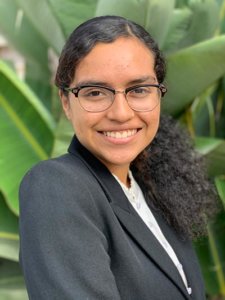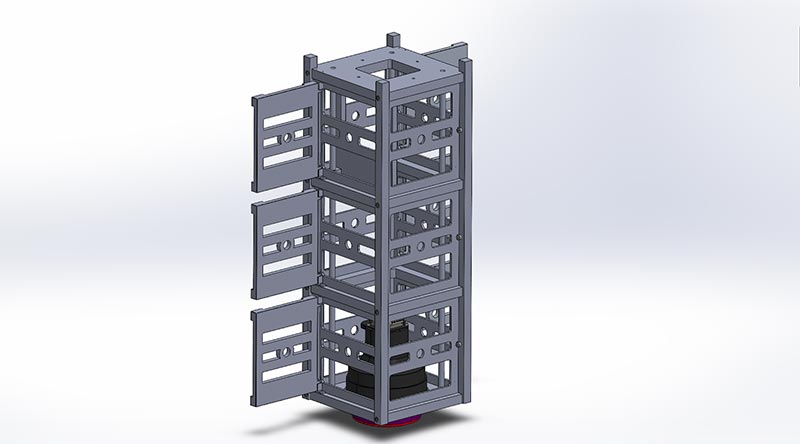As wildfires continue to cause destruction across California, a team of Cal State Fullerton engineering and computer science students is exploring a solution to fight the devastating infernos.
The undergraduates are designing, manufacturing and building a cube-shaped, miniaturized satellite, known as a CubeSat, to observe Earth from space to predict and detect fires. The data captured is used to detect areas of risk — to put out fires before a blaze even starts.
“This year’s fire season has been particularly harmful. With the onset of climate change, we need to utilize tools such as satellites to study Earth and try to predict and prevent natural disasters,” said senior Patrick Babb, a mechanical engineering major who is leading the team project.
The 10-member student team is developing a prototype, dubbed “TitanSat,” which incorporates infrared cameras and solar power to monitor Earth’s climate and detect hot and dry zones that pose a wildfire risk.
The TitanSat is a long-term research project, with the goal of eventually launching the microsatellite into space one day, noted Sagil James, associate professor of mechanical engineering, who is the team’s faculty adviser with Kiran George, professor of computer engineering.
“The mission of TitanSat is to introduce satellite technology to our engineering students while addressing critical problems: To save California from the devastation of wildfires by monitoring fire zones and create cost-effective technological solutions that can help progress weather satellite development,” James said.
The other CSUF team members are Kye Arai, Victor Calderon, Scott Cary, Sally George, Abraham Rodriguez and Kirk Williams, all mechanical engineering majors; computer science major Evelyn Johnson; and electrical engineering major Tyra Jackson. A Troy High School student also is working on the project.
Johnson’s role is to develop computer codes to allow the TitanSat to process images and send them back to Earth.
“I’m fascinated about how complex satellites are,” said Johnson, who plans on a career as a software developer and programmer. “Satellites are not just limited to machines, but can also expand to ‘natural satellites’ like the moon that orbits a planet or star.”

Evelyn Johnson is a computer science major working on the CubeSat project.
Evelyn Johnson is a computer science major working on the CubeSat project.
The CubeSat concept was initially conceived more than 20 years ago as a powerful educational tool at the university level to introduce students to space science and exploration, James explained. Today, it has grown into becoming an integral part of actual space missions.
CubeSats are ultra-compact miniature spacecraft that orbit Earth, which can be developed at a relatively low-cost with off-the-shelf parts. The satellite is only 10x10x10 centimeters (10 centimeters is roughly 4 inches) and weighs less than three pounds. The small satellites can withstand forces and temperatures of space, while generating enough power from solar cells to function the electrical and electronic components.

Students created this CubeSat rendering.
“These small satellites are important because they relay information of interest back to Earth or to other satellites and increase access to space for more people. As a result, a larger pool of ideas can be applied to solve problems on Earth, such as climate change so that we can live sustainably,” said Babb, who graduates next year. He plans to pursue a doctorate in aerospace engineering and aspires to work in academia. (See related story)
The goal of TitanSat, which students can work on for their senior capstone project, is to make the satellite lighter and easier to manufacture, Babb added. The students plan to finish a working engineering model by the end of the fall semester and complete the project by spring.
To become more knowledgeable about the miniature satellites, Babb was a 2019 summer intern at NASA’s Ames Research Center in Silicon Valley, where he worked on testing cube satellites and learned how the space agency partners with outside entities to launch such spacecraft. He also led the initial stages of an agreement with the university to launch a cube satellite into space in the future.
“By interning at NASA, I realized that having a good idea is all it takes to launch a CubeSat,” Babb said. “I’m confident that we’ll see a TitanSat in space one day.”